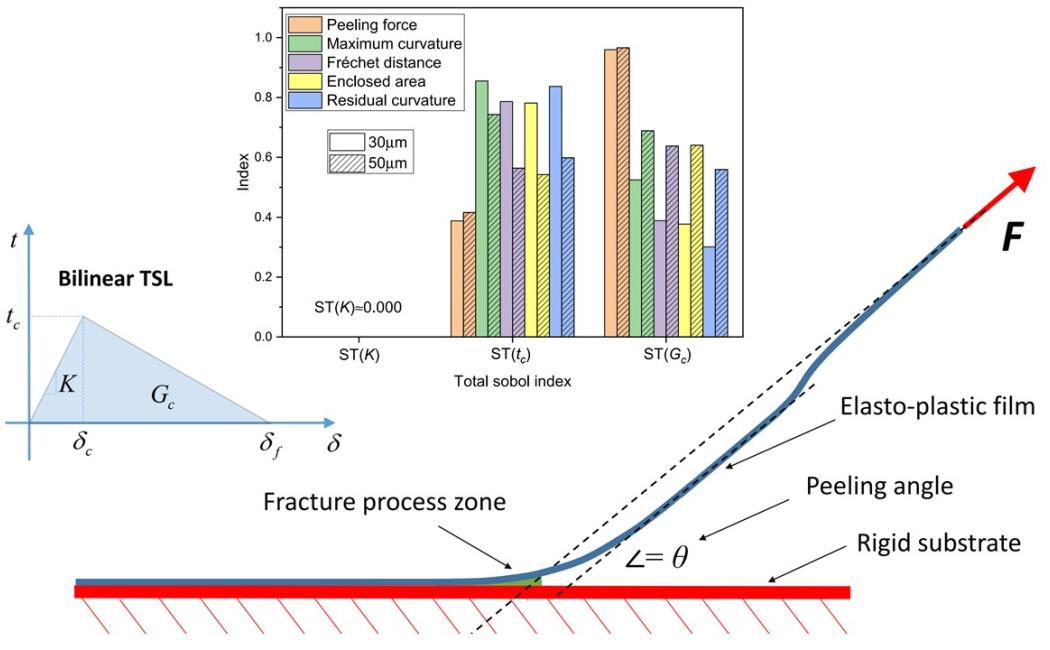


07 July, 2022
Learning from Global Sensitivity Analysis about identification of adhesion properties between an elastoplastic film and a rigid substrate
Xiaole Li, Gilles Lubineau
International Journal of Solids and Structures, Accepted July 2022
Abstract
When peeling an elastoplastic film from rigid substrates, the work of separation (WOS) lumps the fracture energy of adhesion, i.e., the work of adhesion (WOA), and the dissipation from other sources, such as plastic deformation. This lumping poses a challenge for measuring the WOA of elastoplastic films to rigid substrates. A remedy would be to identify properties by matching numerical predictions with experimental measurements. Distinguishing the most informative metrics from the data produced by a peeling test is of initial significance in constructing the objective function to guarantee the efficiency and accuracy of that inverse identification. To evaluate the sensitivity of various experimental data/objective functions to the classical cohesive parameters characterizing adhesion, a model-based global sensitivity analysis is performed using Sobol’s approach. We combine a finite element model and a theoretical model to replicate the process of peeling an elastoplastic film under 90, including loading and unloading. The metrics, i.e., the plateau peeling force, the peeling arm profile, and the residual curvature after release are formulated as the cost functions and then are assessed. It is found that the peeling force, as a direct indicator of WOS, shows the most significant sensitivity to the fracture energy , and the maximum curvature of the peeling arm is the most sensitive metric to the critical traction . Among the considered metrics to quantify the profile similarity of peeling arm, Fréchet distance is the most relevant for incorporation in the objective function for inverse identification purposes, considering sensitivity, accessibility, and tolerance to measurement error. The results also highlight the effect of film’s thickness on energy dissipation and on the sensitivity of metrics. For the peeling scenario with specified input properties, plastic dissipation increases with increasing film thickness, mainly because of the enhancement of the peeling film’s moment-bearing capacity. The increasing thickness enhances the sensitivity to of peeling arm profile and the residual curvature while reducing their sensitivity to ; minimal effect on peeling force is apparent. A tailored objective function incorporating the peeling force and the Fréchet distance is proposed, the effectiveness of which has been demonstrated by a FEMU identification of the adhesive properties between an annealed copper film and a rigid substrate.
Keywords
Peeling test; Inverse identification; Sobol’s analysis; Elastoplastic film